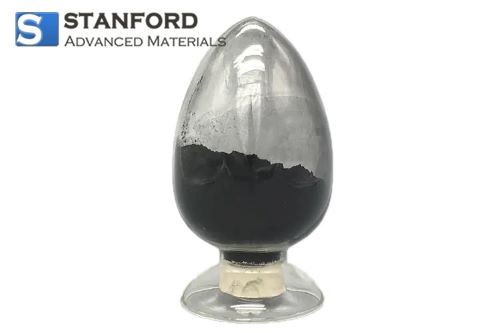Case Study: Powering The Future Of Solar Energy With Cadmium Telluride
Introduction
Cadmium telluride (CdTe) has established itself as a principal material in solar energy applications. Recognised for its photovoltaic performance characteristics, CdTe converts sunlight into electricity with high conversion rates. This process offers a method for generating renewable energy at reduced manufacturing costs and with scalable output. In this article, the role of CdTe in solar technology is described, and its advantages, limitations and significance for the renewable energy sector are discussed.

Figure 1. Solar Panels
Understanding Cadmium Telluride
Cadmium telluride (CdTe) is a compound semiconductor material that has been extensively studied for its role in photovoltaic applications. It is employed in the manufacturing of thin-film solar cells that convert sunlight into electricity. This thin-film structure not only enables efficient light absorption but also reduces material consumption compared with conventional silicon solar cells.

Figure 2. Cadmium Telluride Powder
Advantages of Cadmium Telluride Solar Cells
CdTe solar cells have gained popularity owing to their conversion efficiency, cost efficiency and suitability for large-scale commercial applications. The main features are as follows:
Conversion Efficiency: CdTe cells achieve conversion rates that are competitive with other thin-film technologies and some silicon-based solar cells.
Cost Efficiency: The production process for CdTe cells requires less material and fewer processing steps than conventional silicon cells. Consequently, manufacturing costs are reduced, thereby lowering overall system expenditure.
Challenges: Although these solar cells offer defined benefits, they also present challenges. The toxicity of cadmium necessitates careful handling and disposal, and there are concerns that cadmium may leach in cases of module damage or gradual degradation.
Case Study: Cadmium Telluride for Solar Energy
--The Challenge
A client required high-quality cadmium telluride materials for solar energy technology and subsequently contacted Stanford Advanced Materials (SAM). SAM, using its established expertise in materials science and renewable energy applications, provided recommendations to optimise the performance of CdTe in solar energy systems.
-The Solution
The following specifications for cadmium telluride products are recommended:
Cell Size: The choice of cell size is important for striking a balance between conversion efficiency, manufacturing costs and scalability. Commercial CdTe solar cell specifications typically include 3‑inch, 4‑inch and 6‑inch sizes. The 4‑inch CdTe cell offers a higher conversion efficiency and lower manufacturing cost, which makes it suitable for mass production and commercial use.
Purity: Purity is a critical factor affecting the conversion efficiency of solar cells. A higher purity of the CdTe material facilitates improved charge-carrier transport and limits defects that may impair performance. A purity level of 99.99% or higher is recommended to achieve optimal conversion efficiency.
Crystallographic Structure: The quality of the crystal structure in CdTe is directly linked to both the performance and the operational lifespan of the solar cell. A well-defined crystal structure minimises defects and improves charge-carrier transport.
--Results
These considerations highlight the importance of material quality in the production of CdTe solar cells. Consequently, customers can obtain CdTe material that is engineered to deliver enhanced conversion efficiency, operational stability and extended performance.
Conclusion
CdTe solar cells, with their high light absorption, elevated conversion efficiency and an optimised bandgap, offer a practical solution for large‑scale solar energy generation at reduced manufacturing costs. Stanford Advanced Materials (SAM) is a reliable source for a range of cadmium telluride compounds. The company also provides customised products. Please contact SAM with your enquiries.

 Bars
Bars
 Beads & Spheres
Beads & Spheres
 Bolts & Nuts
Bolts & Nuts
 Crucibles
Crucibles
 Discs
Discs
 Fibers & Fabrics
Fibers & Fabrics
 Films
Films
 Flake
Flake
 Foams
Foams
 Foil
Foil
 Granules
Granules
 Honeycombs
Honeycombs
 Ink
Ink
 Laminate
Laminate
 Lumps
Lumps
 Meshes
Meshes
 Metallised Film
Metallised Film
 Plate
Plate
 Powders
Powders
 Rod
Rod
 Sheets
Sheets
 Single Crystals
Single Crystals
 Sputtering Target
Sputtering Target
 Tubes
Tubes
 Washer
Washer
 Wires
Wires
 Converters & Calculators
Converters & Calculators
 Chin Trento
Chin Trento


